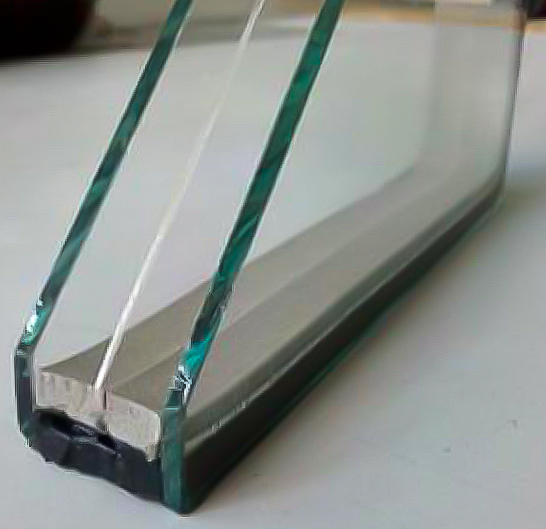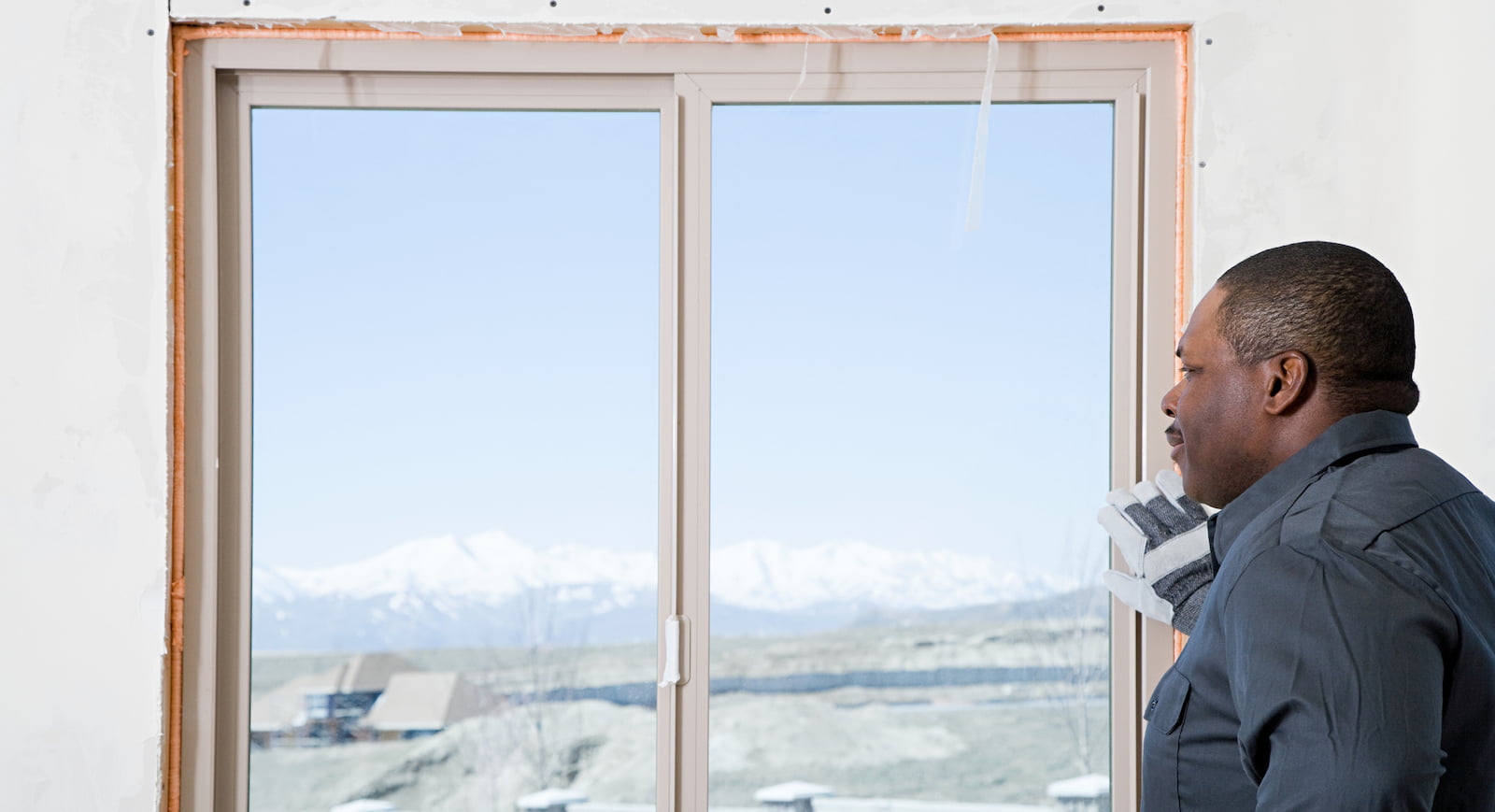The first time you look at an energy modeling report, one thing jumps out: Windows are big holes in the energy envelope. They are responsible for up to 48% of the heat loss from a typical home, but comprise only 7% of the envelope area.
That’s not really surprising. Wall insulation is required to be no less than R19 by most building codes. The typical new double-pane window has an insulating value between R2.5 and R3. The performance gap becomes ridiculously wide in zero energy homes, where great attention is paid to building insulation, and the wall can be anywhere from R25 to as high as R60. How can these holes in zero energy envelopes be closed cost effectively?
Reducing Window Area While Improving Lighting, Ventilation, and Views
Reducing the window area of a home is an excellent way to reduce heat loss and save money, but it isn’t a big hit with building designers who emphasize natural light, outdoor views, passive solar heat gain, and the architectural aesthetics of windows. And, there is a limit to how far one can take the window elimination approach. Windows also provide natural ventilation and emergency egress from bedrooms. So trimming window area becomes a balancing act between the energy efficiency gains from reducing window area and the many additional benefits windows provide. Thoughtful design that prioritizes window placement and sizing can help get the benefits of both worlds.
Improved Double-Pane Windows
In recent years, double-pane windows have improved significantly — routinely achieving a heat loss rate of U-0.30, which is the building code in some cold climates. Low-E (emissivity) coatings, inert gas fill between the panes, and thermally-improved spacers all contribute to improved performance. Some manufacturers, such as Milgard have pushed the limit with double- pane windows that offer a heat loss rate as low as U-0.23 (R4), which is as good or better than some triple-glazed products. This Milgard window offers an excellent value in a standard production window and has been used successfully in affordable new zero energy homes as well as in zero energy and other energy-efficient retrofits.

Triple Glazing
Moving up to better quality triple-pane windows can reduce heat loss to around U-0.20, or an insulating value of about R5, although not all triple-pane windows achieve this rating. And some exceed it. Very high performance triple- pane windows are available as low as U-0.10 (R10). Most of these windows are made in Europe or Canada. For example, Intus Windows, a leading European manufacturer of high R windows, has triple pane windows with R values ranging from about 5 to 11 at a premium price.
Triple-pane windows have a higher R value because they use all the performance features mentioned above, such as low-E, plus three layers of glazing instead of the typical two layers. Adding a third pane of glass improves efficiency but makes them bulky, heavy, and expensive.
The time is ripe for a production window that provides all the benefits of triple-pane windows without the drawbacks of weight and bulk that come with the current crop of triple-pane windows.
The Manufacturing Challenge
High-performance windows have been improving for decades with additional layers of glazing, low-E coatings, low conductivity spacers, and inert gas fill in a sealed unit. The stumbling block has been the additional layer of glazing required to reach the next level. An extra layer of glass is thick and heavy. Typically, each piece of glass in a window is about 3 mm thick. Adding a third layer of glass requires a wider window frame and that means using more material and retooling manufacturing lines, which leads to more cost.
Suspended film has been used for decades to create lighter triple- and quad-pane insulated glass units (IGUs). However, it has been difficult to automate their assembly and it has remained essentially a manual process. So multi-pane IGUs based on suspended films are expensive with little prospect that they can scale up enough to bring the price down.
Go Thin
A breakthrough that may provide the benefits of triple-pane with the cost of double is the development of thinner glass. Taking advantage of growing demand for very thin glass (0.7 to 1.0 mm) used in flat-screen televisions, window manufacturers can now acquire thin glass to slip a third layer of glass into the same sash thickness as a double-pane IGUs without redesigning the frame or adding significant weight. The manufacturing process can also be automated to reach higher economies of scale. Krypton gas replaces argon in the spaces between the panes and thermally-improved spacers replace metal spacers. This package of features reduces the heat loss rate to as low as U 0.14 (R7).
“Drop In” High-R Replacement Windows
Easily and economically replacing existing windows with high R-value windows is one of the challenges to getting existing housing stock on the path to zero. One big advantage of thin windows is that a thin triple-pane IGU can simply be “dropped-in” to existing double-pane frame profiles as part of energy-efficiency upgrade projects. This opens the possibility to eventually replace double-pane IGUs in millions of windows to improve the performance of existing homes. The drop-in thin triple-pane IGU would improve the overall window performance to around U-0.20 (R5). For example, Alpen High Performance Products claims U-0.17 for their Winsert replacement unit. This thin window retrofit could reduce whole-house energy use by as much as 16% in existing homes in cold climates and move existing homes rapidly toward much better energy performance.
The Future Will Be Thin
The development and commercialization of thin-triple technology was spearheaded by Lawrence Berkeley National Laboratory (LBNL). The Lab has been working to improve the energy performance of windows for several decades. Currently, Alpen High Performance Products and Andersen Windows are collaborating with LBNL to bring these super windows to market. The State of California and Northwest Energy Efficiency Alliance are developing plans to move the window market to the greater efficiency of the thin-triple products — and Alpen already offers them. In the near term, expect prices similar to existing triple-pane windows, but they will likely be less expensive as demand and manufacturing efficiency grow. While high-performance triple-pane windows have been available for many years, a new affordable, light, thin triple-pane window will boost zero energy homes — both new construction and retrofits. If the product lives up to its promise, mainstream builders would flock to a product offering significantly better energy performance, little additional cost, and no changes in design, detailing, or labor.
Getting Windows Right with Energy Modeling
The choice to use lower cost, lower R-value double- pane windows or higher R-value triple- pane windows, including the new thin ones, can be informed by energy modeling. The model can show the difference in total building energy use for different window choices. Using window cost estimates from local suppliers, you could then calculate a cost/Btu for each window package and compare that with other energy-efficiency measures such as high- performance heat pumps or solar electric panels. One place to screen for good windows is the Energy Efficient Windows website, which allows you to search by your location and building characteristics. You can sort the resulting list by U-value to see the most efficient windows and then click through to see more information on specific products.
Closing the Holes in the Envelope
While no window will completely close the holes in the envelopes of highly energy efficient homes, window R-value has come a long way in the last few decades. Checking out the window alternatives described here and using energy modeling to find the most cost- effective option for further “closing the holes in the envelope” is an important step in building cost comparable zero energy homes and retrofits.


Forster Fry says:
There need to be some affordable training for the General Contractors, We want to know these things theirs just not enough information available to us.
Bruce Sullivan says:
I’m happy to say that there is a fair amount of training that is free or at least not expensive. Please see a current list of conferences and online classes on the ZEP course calendar.
https://zeroenergyproject.com/build/zero-energy-home-building-design-course-calendar/
Mike Schimizzi says:
I agree the future is in the added “drop in” ultra thin glazing. Unfortunately, I still don’t see the cost going down significantly. Until the Uw value for energy star certification is lowered the large manufacturers will not see a point in adding a third glazing. I fear energy efficient windows in this country will remain a niche market for a long time. I recently started a window distribution company offering cost effective triple glazed windows and most of the inquiries I receive are from people looking for windows in non-standard colors. The demand for triple glazed windows in the US seems minimal at best.
Portella says:
Very informative. Thanks for sharing such helpful content!